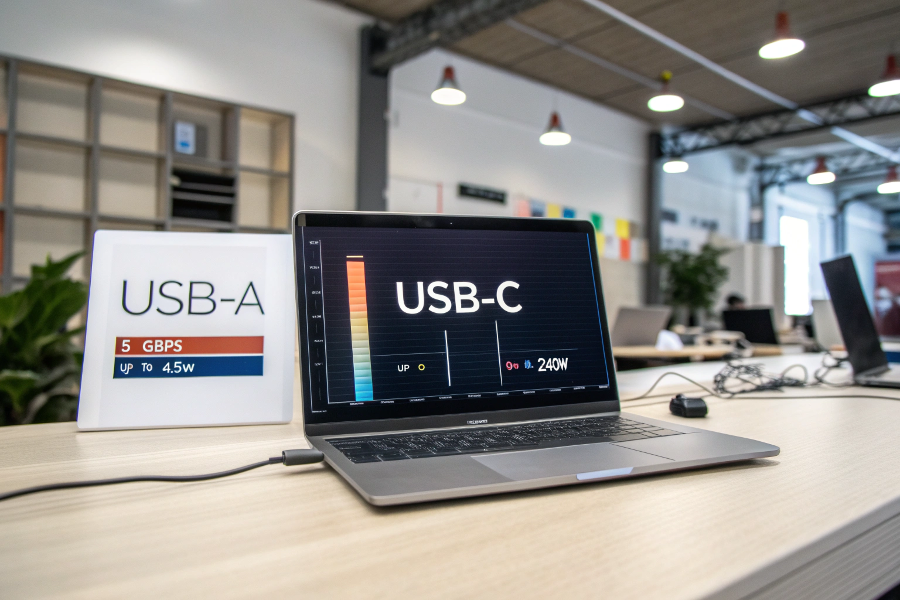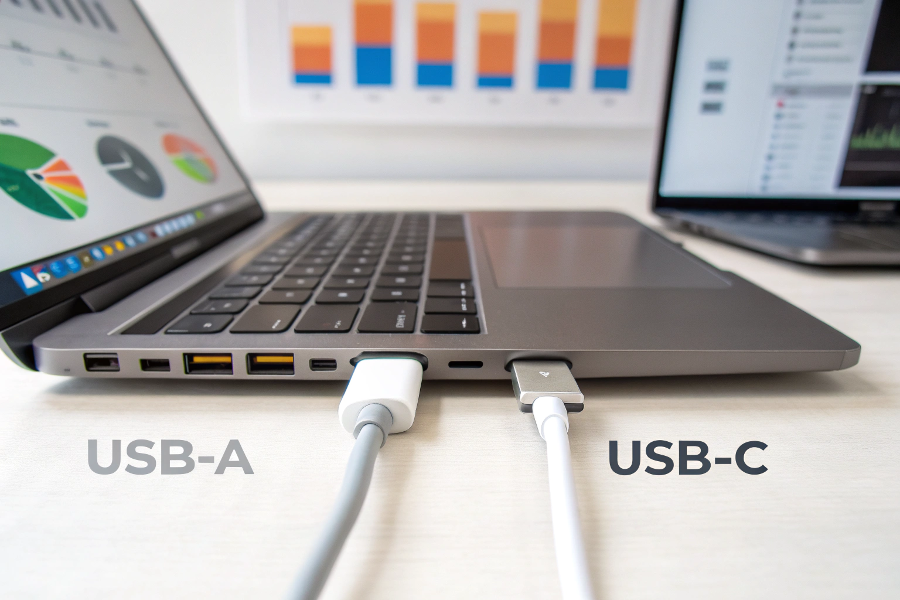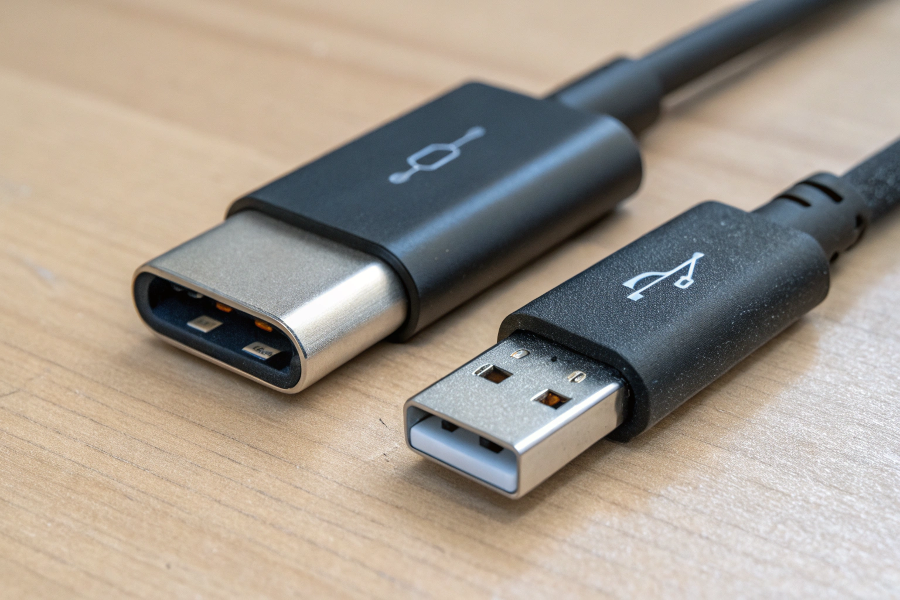Confused about all the different USB cables? You are not alone. It is easy to get lost trying to figure out which plug goes where.
USB-A is the older, rectangular connector you’ve probably used for years. USB-C is newer, smaller, and oval-shaped. The big difference? USB-C is reversible and offers faster data transfer and power delivery1.

Knowing the difference matters.
What are the Physical Differences Between USB-A and USB-C?
Frustrated with always plugging your USB-A cable in the wrong way? Are you seeking a plug that you can just plug and use?
The most obvious difference is the shape. USB-A is larger and rectangular, and it only goes in one way. USB-C2 is smaller, oval-shaped, and reversible – you can plug it in either way up.

This simple change makes a big difference.
Physical Comparison
| Feature | USB-A | USB-C |
|---|---|---|
| Shape | Rectangular | Oval, symmetrical |
| Reversible? | No | Yes |
| Size | Larger | Smaller |
| Pins | Typically 4-9 | 24 |
What are the Performance Differences Between USB-A and USB-C?
Tired of slow file transfers? Want a cable that can charge your laptop and your phone?
USB-C generally supports much faster data transfer speeds3 and higher power delivery than USB-A. This is because USB-C can be used with newer USB standards like USB 3.1, USB 3.2, USB4, and Thunderbolt.

Speed and power matter.
Performance Showdown
| Feature | USB-A (Typical) | USB-C (Typical) |
|---|---|---|
| Data Speed | Up to 5 Gbps (USB 3.0/3.1 Gen 1) | Up to 40 Gbps (USB4, Thunderbolt) |
| Power Output | Up to 4.5W (USB 3.0) | Up to 240W (USB PD with EPR) |
| Video Output? | Usually No | Yes (DisplayPort Alternate Mode) |
Why is USB-C Considered the Future of Connectivity?
Seeing USB-C everywhere and wondering why? Thinking, can this really replace all my other cables?
USB-C is becoming the universal standard because of its versatility, speed, power capabilities, and reversible design. It can handle data, video, and power all in one cable, simplifying connectivity.

One cable to rule them all.
Advantages of USB-C
| Feature | Advantage | Benefit |
|---|---|---|
| Reversible | No more fumbling to plug it in the right way. | Easier and faster to connect. |
| Speed | Much faster data transfer speeds. | Quicker file transfers, smoother video streaming. |
| Power | Can deliver enough power to charge laptops and other larger devices. | One charger for multiple devices. |
| Versatility | Can carry data, video, and power simultaneously. Supports DisplayPort and Thunderbolt. | Reduces cable clutter, simplifies connections. |
| Universal | Becoming the standard port on most new devices, from phones to laptops to monitors. | Greater compatibility, fewer adapters needed. |
| compact | Smaller size, more suitable for carrying. | Smaller size, more portable. |
Conclusion
USB-C is not just a new connector. It is a step to the future of connectivity! Easy to use, fast and powerful.
-
Discover how USB-C power delivery can simplify your charging needs and support multiple devices efficiently. ↩
-
Explore the advantages of USB-C, including speed, power delivery, and versatility, to understand why it’s the future of connectivity. ↩
-
Learn about the significant differences in data transfer speeds between USB-A and USB-C to enhance your tech knowledge. ↩
